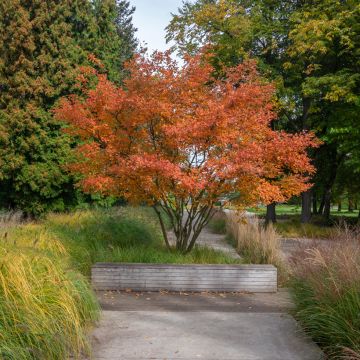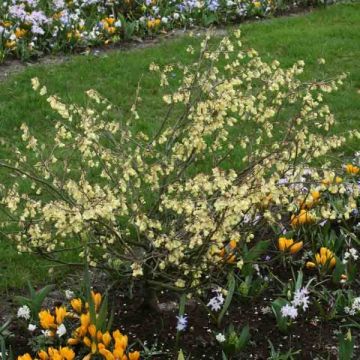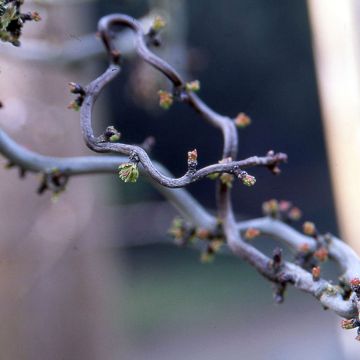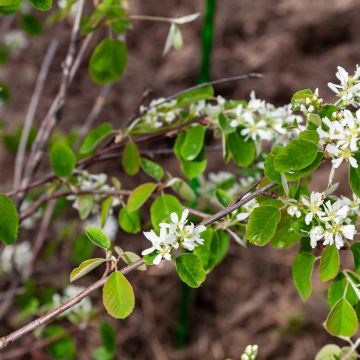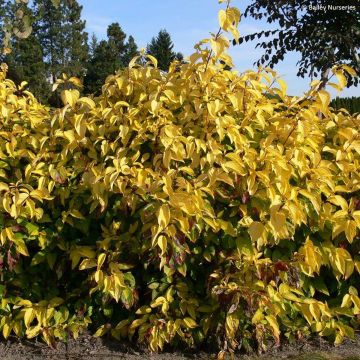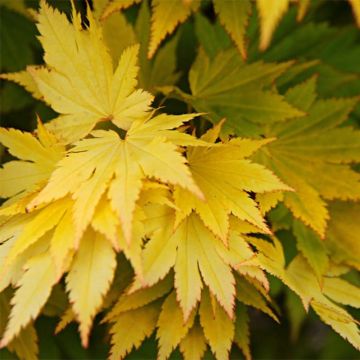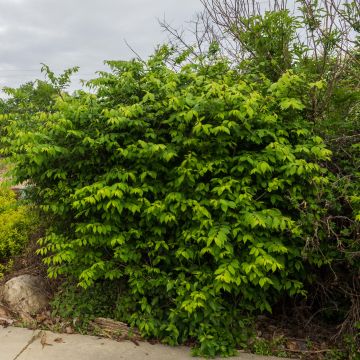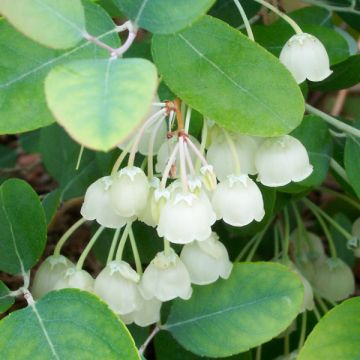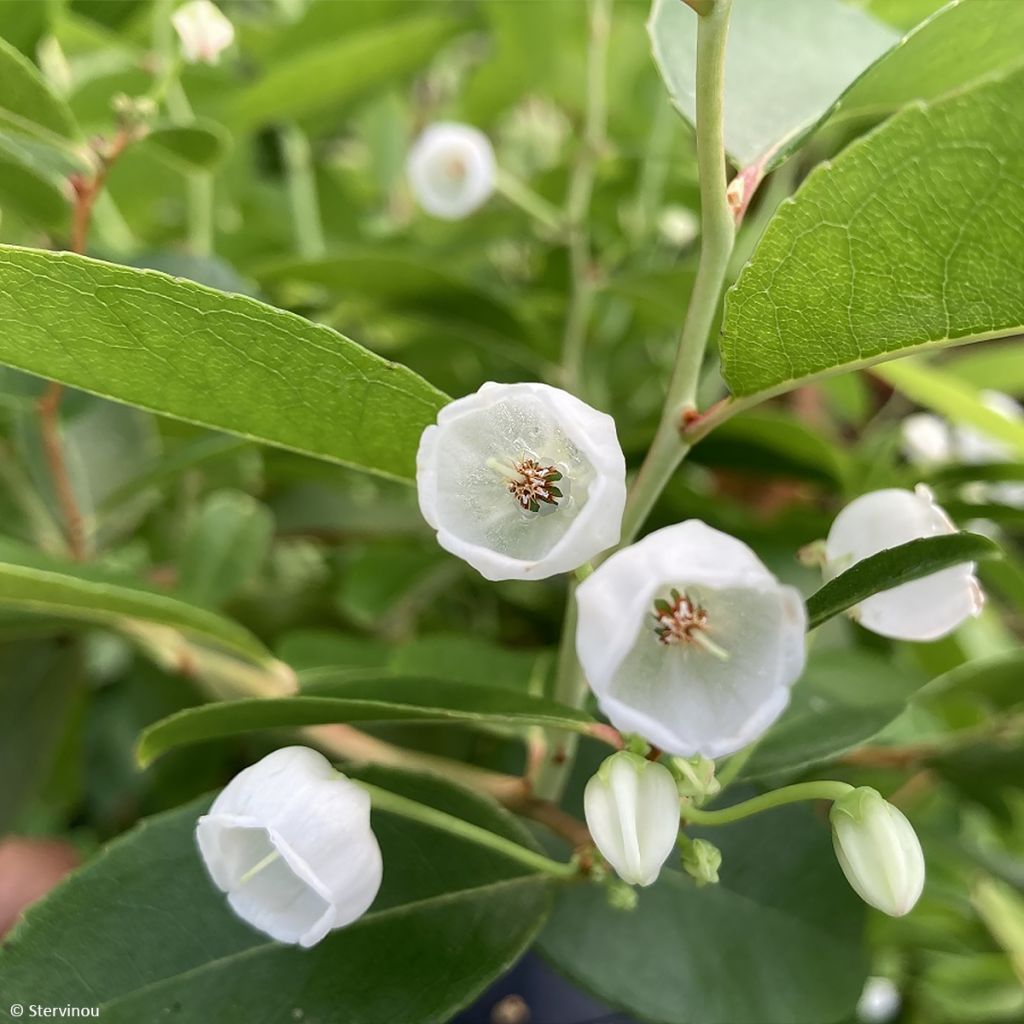

Zenobia pulverulenta Raspberry Ripple - Muguet en arbre
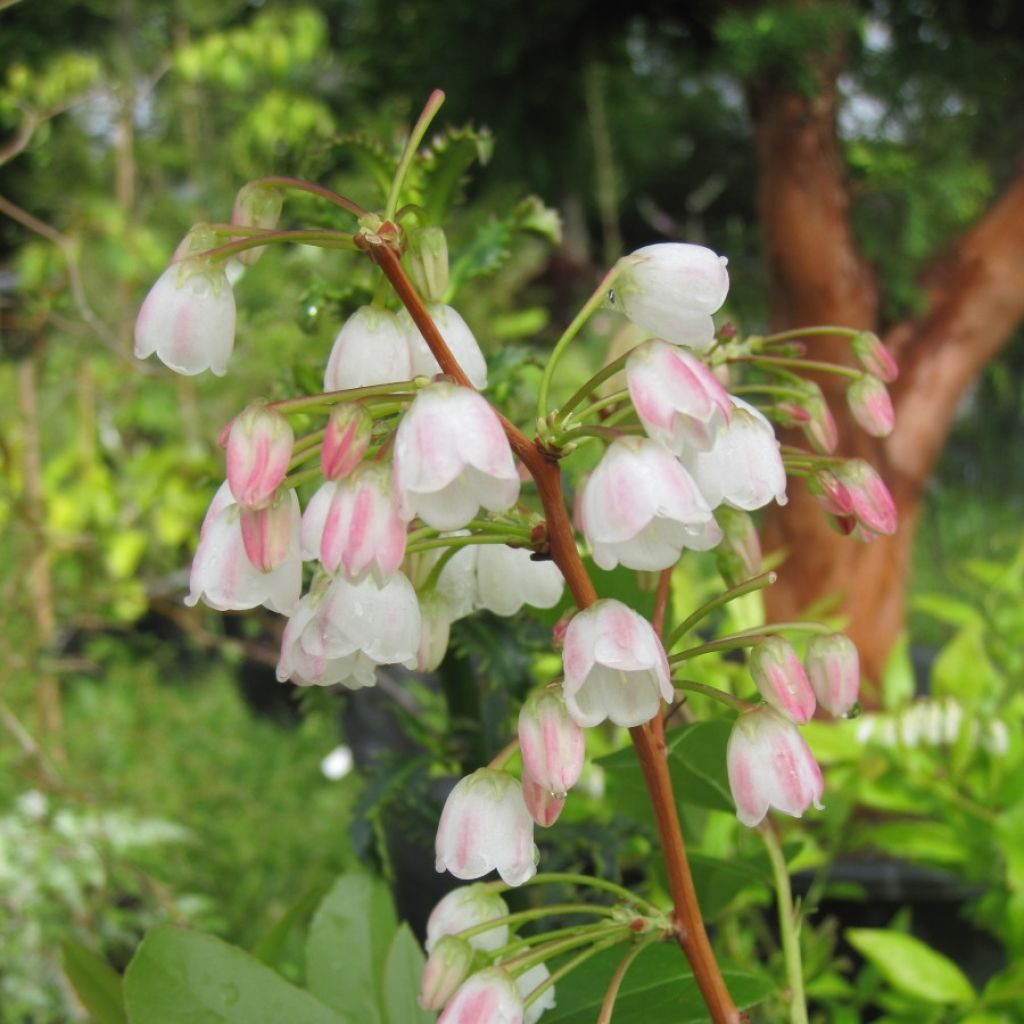

Zenobia pulverulenta Raspberry Ripple
Zenobia pulverulenta Raspberry Ripple
Zenobia pulverulenta Raspberry Ripple
This item cannot be shipped to the selected country
Delivery charge from €5.90
More information
Schedule delivery date,
and select date in basket
This plant carries a 24 months recovery warranty
More information
We guarantee the quality of our plants for a full growing cycle, and will replace at our expense any plant that fails to recover under normal climatic and planting conditions.
From €5.90 for pickup delivery and €6.90 for home delivery
Express home delivery from €8.90.
Does this plant fit my garden?
Set up your Plantfit profile →
Description
The Zenobia pulverulenta 'Raspberry Ripple' is a bush lily of the valley tree variety, particularly ornamental with its marbled raspberry pink scented flowering, young shoots of the same pink colour, and bluish foliage in spring that turns red in autumn. It is a cold-resistant bush, absolutely delightful but somewhat demanding: it appreciates the same growing conditions as a rhododendron.
The Zenobia 'Raspberry Ripple' belongs to the Ericaceae family, just like heathers. The botanical species is a deciduous to semi-evergreen bush native to the southeastern United States, where it is found on the edge of pine forests along with heathers, in peat bogs and damp heathlands, in poor, acidic, and consistently moist soil.
The 'Raspberry Ripple' cultivar distinguishes itself with its lovely pink colours. It is a slow-growing bush that generally reaches 1.50 m (5ft) in all directions. Its habit is flexible, carried by slightly arched branches, covered with a bluish bloom when young. The foliage is evergreen in mild climates during winter but, more often than not, falls in autumn, depending on the severity of the winter. It consists of ovate leaves, 2 to 7 cm (1 to 3in) long, arranged alternately. Young shoots are tinged with pink-red, unfurling into leaves covered with a bluish bloom. Their undersides are pale blue. With the cold, in autumn and winter, they turn reddish-purple. Over time, the bark turns reddish-brown, offering an exciting contrast with the foliage. Flowering takes place from May to July, depending on the climate. The raspberry-pink flower buds emerge along the previous year's branches. They are grouped in clusters of 3 to 6 units, each opening into a bell-shaped, pendulous flower, white marbled with pink-red. They emit a delightful scent, both aniseed and vanilla.
A heathland plant in the strict sense, the Zenobia 'Raspberry Ripple' will reach its full potential in gardens that provide the cool and humid temperate climate it requires. It can be planted in borders with Japanese maples, rhododendrons, Pieris, camellias, and other azaleas. Its small size and slow growth allow it to be grown in a large pot, using a suitable growing medium, with frequent watering using rainwater.
Report an error about the product description
Zenobia pulverulenta Raspberry Ripple in pictures
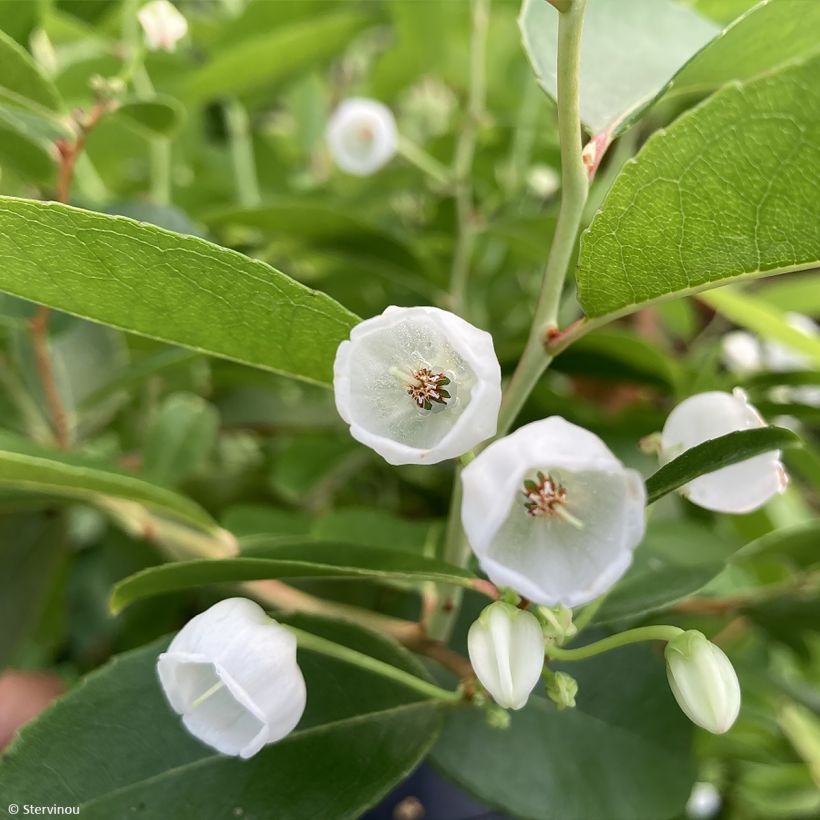

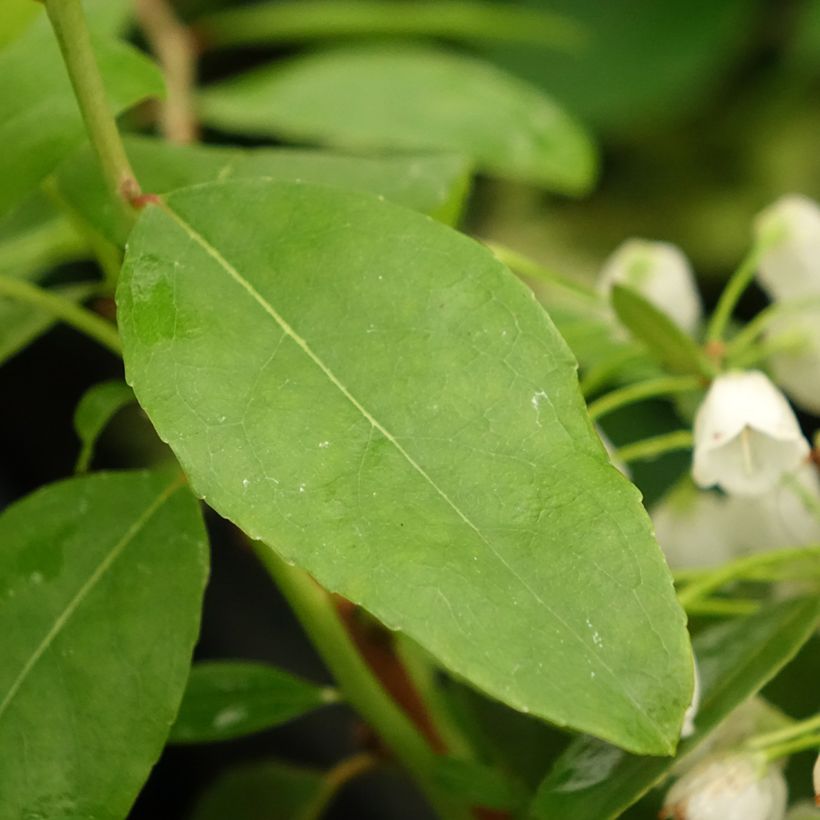

Plant habit
Flowering
Foliage
Botanical data
Zenobia
pulverulenta
Raspberry Ripple
Ericaceae
Cultivar or hybrid
Other Shrubs A to Z
Planting and care
The Zenobia pulverulenta 'Raspberry Ripple' is best planted during the spring season. This bush thrives in semi-shaded areas protected from cold and dry winds. It requires a cool to moist, light, humus-rich, and strictly acidic soil. Sandy and poor, peaty soil is also suitable for this plant. To protect it from winter cold and summer drought, you can cover its base with straw or dry leaves. This bush does not require regular pruning. Although it is resistant to diseases, it cannot withstand limestone, heat, air, and soil drought. You should only use rainwater or non-limestone tap water for watering the plant.
Planting period
Intended location
Care
-
, onOrder confirmed
Reply from on Promesse de fleurs
Shrubs by soil type
Haven't found what you were looking for?
Hardiness is the lowest winter temperature a plant can endure without suffering serious damage or even dying. However, hardiness is affected by location (a sheltered area, such as a patio), protection (winter cover) and soil type (hardiness is improved by well-drained soil).

Photo Sharing Terms & Conditions
In order to encourage gardeners to interact and share their experiences, Promesse de fleurs offers various media enabling content to be uploaded onto its Site - in particular via the ‘Photo sharing’ module.
The User agrees to refrain from:
- Posting any content that is illegal, prejudicial, insulting, racist, inciteful to hatred, revisionist, contrary to public decency, that infringes on privacy or on the privacy rights of third parties, in particular the publicity rights of persons and goods, intellectual property rights, or the right to privacy.
- Submitting content on behalf of a third party;
- Impersonate the identity of a third party and/or publish any personal information about a third party;
In general, the User undertakes to refrain from any unethical behaviour.
All Content (in particular text, comments, files, images, photos, videos, creative works, etc.), which may be subject to property or intellectual property rights, image or other private rights, shall remain the property of the User, subject to the limited rights granted by the terms of the licence granted by Promesse de fleurs as stated below. Users are at liberty to publish or not to publish such Content on the Site, notably via the ‘Photo Sharing’ facility, and accept that this Content shall be made public and freely accessible, notably on the Internet.
Users further acknowledge, undertake to have ,and guarantee that they hold all necessary rights and permissions to publish such material on the Site, in particular with regard to the legislation in force pertaining to any privacy, property, intellectual property, image, or contractual rights, or rights of any other nature. By publishing such Content on the Site, Users acknowledge accepting full liability as publishers of the Content within the meaning of the law, and grant Promesse de fleurs, free of charge, an inclusive, worldwide licence for the said Content for the entire duration of its publication, including all reproduction, representation, up/downloading, displaying, performing, transmission, and storage rights.
Users also grant permission for their name to be linked to the Content and accept that this link may not always be made available.
By engaging in posting material, Users consent to their Content becoming automatically accessible on the Internet, in particular on other sites and/or blogs and/or web pages of the Promesse de fleurs site, including in particular social pages and the Promesse de fleurs catalogue.
Users may secure the removal of entrusted content free of charge by issuing a simple request via our contact form.
The flowering period indicated on our website applies to countries and regions located in USDA zone 8 (France, the United Kingdom, Ireland, the Netherlands, etc.)
It will vary according to where you live:
- In zones 9 to 10 (Italy, Spain, Greece, etc.), flowering will occur about 2 to 4 weeks earlier.
- In zones 6 to 7 (Germany, Poland, Slovenia, and lower mountainous regions), flowering will be delayed by 2 to 3 weeks.
- In zone 5 (Central Europe, Scandinavia), blooming will be delayed by 3 to 5 weeks.
In temperate climates, pruning of spring-flowering shrubs (forsythia, spireas, etc.) should be done just after flowering.
Pruning of summer-flowering shrubs (Indian Lilac, Perovskia, etc.) can be done in winter or spring.
In cold regions as well as with frost-sensitive plants, avoid pruning too early when severe frosts may still occur.
The planting period indicated on our website applies to countries and regions located in USDA zone 8 (France, United Kingdom, Ireland, Netherlands).
It will vary according to where you live:
- In Mediterranean zones (Marseille, Madrid, Milan, etc.), autumn and winter are the best planting periods.
- In continental zones (Strasbourg, Munich, Vienna, etc.), delay planting by 2 to 3 weeks in spring and bring it forward by 2 to 4 weeks in autumn.
- In mountainous regions (the Alps, Pyrenees, Carpathians, etc.), it is best to plant in late spring (May-June) or late summer (August-September).
The harvesting period indicated on our website applies to countries and regions in USDA zone 8 (France, England, Ireland, the Netherlands).
In colder areas (Scandinavia, Poland, Austria...) fruit and vegetable harvests are likely to be delayed by 3-4 weeks.
In warmer areas (Italy, Spain, Greece, etc.), harvesting will probably take place earlier, depending on weather conditions.
The sowing periods indicated on our website apply to countries and regions within USDA Zone 8 (France, UK, Ireland, Netherlands).
In colder areas (Scandinavia, Poland, Austria...), delay any outdoor sowing by 3-4 weeks, or sow under glass.
In warmer climes (Italy, Spain, Greece, etc.), bring outdoor sowing forward by a few weeks.

































